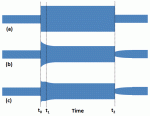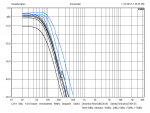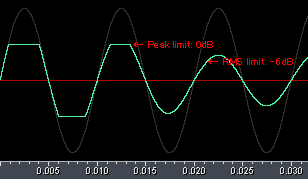Re: Which limiters are good enough?
Very good analogy. The best solution to prevent blowing up gear is to make sure you have enough that you're not driving it to the edge. If I EVER see a clip light during a show, that means I didn't bring enough.
I think this is mostly true for experienced operators and finely tuned rigs. That said, I've seen rigs that are so poorly set up, they hit clip lights because one passband is just out of control and/or there is a wild EQ setting somewhere.
I seem to remember a certain someone who blew up only the mids of their rig, mid show. I think this is a good example of where the rig probably had enough gas, but something just wasn't right, and therefore gave up the smoke. Or maybe the mids were just "weaksauce."
I run DR260's on most of my rigs, and have the peak limiter in place just in case things go horribly wrong. But they aren't there to kick in during a show. i.e., bad cable, someone drops a mic, etc. My power amps are matched so that out of clip, the RMS power run for extended periods should not be a problem. You'd have to try REALLY hard to push it to the limit long enough to blow it.
I've always wondered about the DR260s limiters. They have that PeakStop+ and overshoot control. In someways it's sort of like an RMS limiter, though not exactly...
If you set the threshold for X and the overshoot for +6, then the limiter is supposed to start engaging at X and never let the signal go over X+6. Theoretically, if you set X for the Vrms level - 3dB you want your speakers to run, you shouldn't cause much overheating and still have 6 dB of dynamic range (not much, but OK for heavy music program - most recorded music I see today has less than <6 dB of crest factor).
Maybe it would limit the system too much. That said, with the standard 2x RMS power amp sizing, I don't think it would. I think most power amps can squeeze out 2 or 3 dB over their RMS rating, putting you at 5-6 dB over RMS for total "swing."
Power amp sizing (for maximum performance) is anything but straightforward IMO. I think it largely has to do with the type of music - and even then it's not simple. People never seem to wrap their brains around the fact that with a lot of live music you are looking at a 10db crest factor (easily) so to extract every last bit of juice out of a speaker you really need amps that can do the peak rating of the speaker.
I'm not even sure what the peak ratings of the speakers mean exactly - and I think in some cases with a very dynamic signal having an RMS below the rating of the speaker, but with crests above the peak rating - you'd still probably be OK without a limiter assuming your amps are sized to do the work.
That said, by in large, in my experience, if you have amps that are 2x rms, you will likely never blow a driver sans limiters if you avoid, or just occasionally tickle, a clip light.



